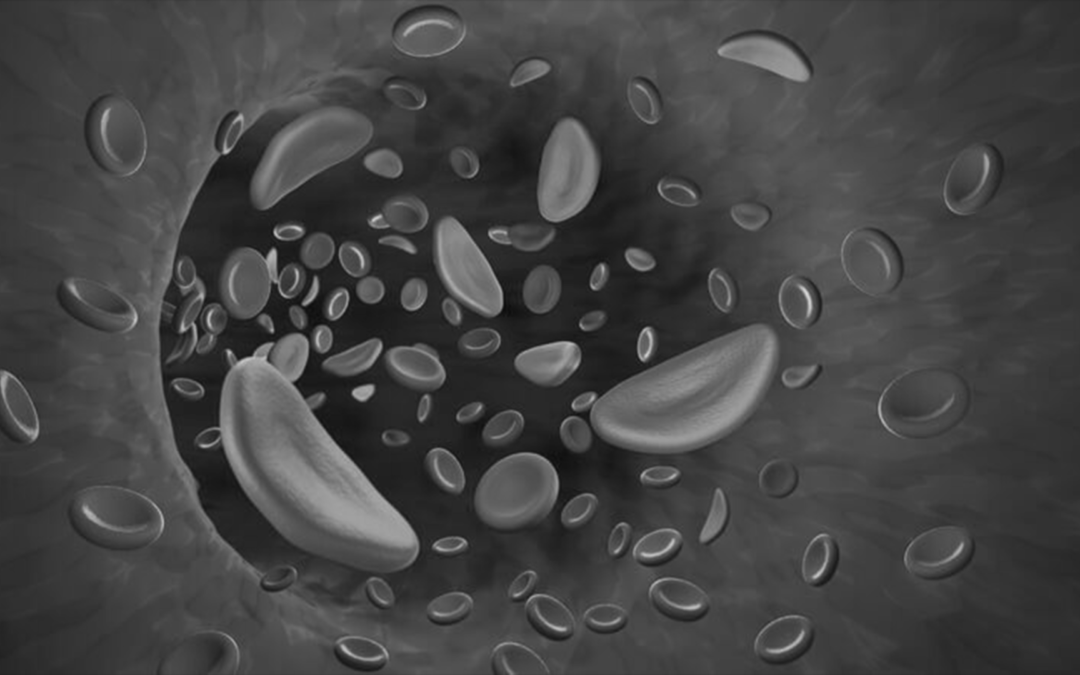Why does sickle cell cause pain and how can it be best managed?
Pain, in my experience, is one of the most common symptoms of sickle cell disease. It is, in fact, its trademark.
Unsurprisingly, the Yoruba word for sickle cell disease is “aro’moleegun,” which means “bone pain.” Pain is a constant for people with moderate to severe sickle cell disease. However, sickle cell pain is not limited to the bone; it can affect any part of the body that is supplied by blood.
The disease is known as “sickle cell disease” because our red blood cells are sickle-shaped rather than biconcave. Sickled red blood cells, in contrast to normal red blood cells, are sticky and gel-like. These blood cells adhere to blood vessels and obstruct blood flow to the body’s organs rather than flowing freely through them.
This impairment also prevents oxygen and other nutrients from reaching organs, resulting in tissue injury or death. In sickle cell patients, this tissue injury activates the nociceptive pain pathway, resulting in pain. A sickle cell crisis is the acute pain caused by the sickling process of sickle cell disease.
Growing older
My parents said I had my first sickle cell crisis when I was a year old. My parents had no idea I had sickle cell disease at the time. I had suddenly developed bone pain in my limbs and abdomen, as evidenced by my incessant crying and reaction when they touched those areas of my body.
I also had a distended abdomen, a high fever, and deeply yellowish eyes, which led to my first hospitalization and the diagnosis of sickle cell disease.
My parents, however, did not inform me of the disease until I was 11 years old. Despite my age, I sensed that something wasn’t quite right. I was frequently in excruciating pain. This happened on a regular basis and lasted about five days. My parents, of course, treated me differently than my siblings, and I was the child who always slept in their room so that they could keep an eye on me.
As I grew older, I discovered that I was sicker than my siblings. I’ve noticed that a little stress or cold weather causes me pain. I couldn’t take the same liberties as my peers. I’d get sick and miss classes if I played a lot. All of this piqued my interest.
When I was in school, I became extremely inquisitive. I remember asking my mother why I was the only child who took medications on a regular basis. I was given perplexing answers, but they were just enough to satisfy my curiosity for the time being.
As I approached my adolescence, I became more aware of my health and the factors that can precipitate sickle cell crises, known as triggers. This knowledge frequently assisted in reducing my acute pain episodes. Stress, temperature extremes (both hot and cold), dehydration, physical exertion, infection, smoking, alcohol, sleep deprivation, and high altitudes are among the crisis triggers I discovered.
Other triggers such as hypoxia, acidosis, menstrual cramps, surgical procedures, pregnancies, obstetric deliveries, coexisting medical conditions, and emotional disturbances such as anger, depression, overexcitement, sadness, fear, and panic became more clear to me as I grew older. I also learned that there are idiosyncratic triggers that are unique to some people but not universal.
My sickle cell pain has changed as I’ve gotten older. I used to have more severe pain episodes when I was younger. As I grew older, I experienced less acute pain and more chronic pain syndrome, complications, and acute-on-chronic pain episodes.
Educating Oneself
None of these stages have been simple. Only by increasing my knowledge of the disease, learning more about sickle cell crisis triggers and management, and taking my healthcare and preventive care seriously have I been able to deal with these transitions and excel at overcoming my sickle cell challenges.
Sickle cell disease is a chronic condition that worsens over time. It usually becomes more difficult as you get older, at least for people with moderate to severe disease. The good news is that there are numerous ways to influence the disease’s progression. We can accomplish this by learning, avoiding crisis triggers, managing unavoidable ones, taking our routine medications, attending clinic appointments, using disease-modifying and preventive treatments as prescribed by our health professionals, and taking our health seriously.
Some sickle cell disease patients are defying the odds and living longer lives by utilizing various disease-modifying therapies and paying attention to their health and care.
Positive thinking and good mental health care are critical for sickle cell patients’ health.

Erin Balsa is a highly skilled and knowledgeable health journalist with a passion for educating the public on important health and wellness topics. With extensive experience in both traditional and digital media, Erin has established herself as a trusted voice in the field.

